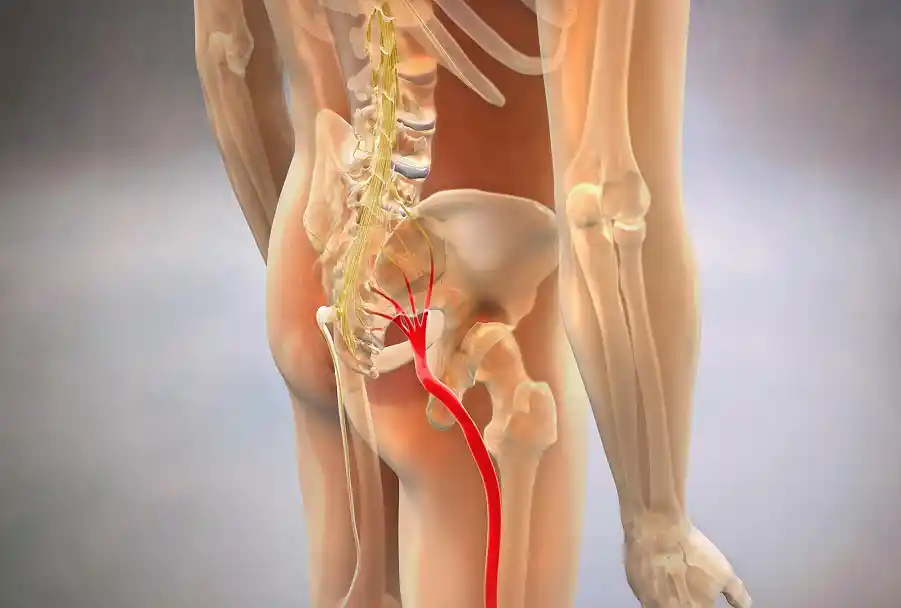Sciatica, characterized by pain radiating from the lower back down through the leg, can be a real pain in the, well, leg. But fear not! There are several self-care strategies you can employ to alleviate discomfort and promote healing. In this comprehensive guide, we’ll explore simple yet effective ways to manage sciatica symptoms and improve your quality of life.
Before diving into self-care techniques, let’s briefly understand what sciatica is. Sciatica occurs when the sciatic nerve, which runs from the lower back through the hips and down each leg, becomes irritated or compressed. This can result in pain, numbness, tingling, or weakness along the nerve’s pathway.
1. Rest and Activity:
Finding the right balance between rest and activity is crucial when managing sciatica. While it’s important to avoid activities that exacerbate your symptoms, prolonged bed rest can actually worsen them. Instead, aim for gentle movement and activities that don’t aggravate your pain.
2. Ice and Heat Therapy:
Ice and heat therapy can provide much-needed relief for sciatica pain. During the acute phase, apply an ice pack to the affected area for 15-20 minutes several times a day to reduce inflammation. Once the acute phase subsides, switch to heat therapy to relax muscles and improve blood flow.
3. Stretching Exercises:
Gentle stretching exercises can help relieve pressure on the sciatic nerve and improve flexibility. Focus on stretches that target the hamstrings, piriformis muscle, and lower back. Remember to stretch slowly and avoid overexertion, as this can exacerbate your symptoms.
4. Low-Impact Exercise:
Engaging in low-impact exercises like walking, swimming, or yoga can help strengthen muscles, improve flexibility, and reduce pain. Avoid high-impact activities that may worsen your symptoms and opt for activities that are gentle on your body.
5. Posture Correction:
Maintaining good posture is essential for managing sciatica. Whether sitting, standing, or lying down, make sure to keep your spine properly aligned. Invest in ergonomic furniture and adjust your workspace to support your spine and reduce strain.
6. Supportive Footwear:
Wearing supportive shoes with good arch support can help reduce pressure on your lower back and sciatic nerve. Opt for shoes that provide cushioning and stability, especially if you spend a lot of time on your feet.
7. Over-the-Counter Pain Relief:
Over-the-counter pain relievers like ibuprofen or naproxen can help reduce pain and inflammation associated with sciatica. Follow the recommended dosage and talk to your doctor if you have any concerns about long-term use.
8. Massage Therapy:
Massage therapy can be a soothing and effective treatment for sciatica. Gentle, targeted massage can help relax tight muscles, improve circulation, and alleviate pain. Consider seeing a licensed massage therapist for regular sessions.
9. Acupuncture:
Some people find relief from sciatica pain through acupuncture, a traditional Chinese therapy that involves inserting thin needles into specific points on the body. Acupuncture may help stimulate nerve function and promote healing in the affected area.
10. Stress Management:
Stress can exacerbate sciatica pain, so it’s important to incorporate stress management techniques into your self-care routine. Practice relaxation techniques such as deep breathing, meditation, or yoga to reduce stress levels and manage pain more effectively.
Final Thoughts:
Sciatica can be a real pain, but with the right self-care strategies, you can find relief and improve your quality of life. From rest and ice therapy to stretching exercises and stress management, there are plenty of simple yet effective ways to manage sciatica symptoms. Listen to your body, be patient, and don’t hesitate to seek professional help if needed. With dedication and consistency, you can conquer sciatica and get back to doing the things you love.
Learn more about enhancing your well-being with our previous article “Transforming Lives: The Dynamic World of Wellness Consulting.“

